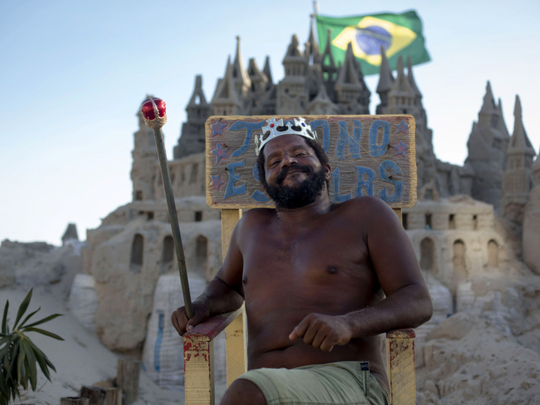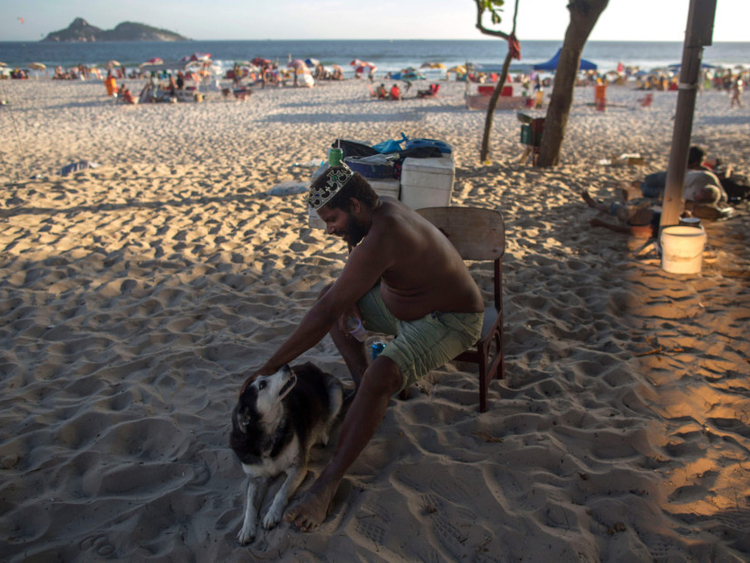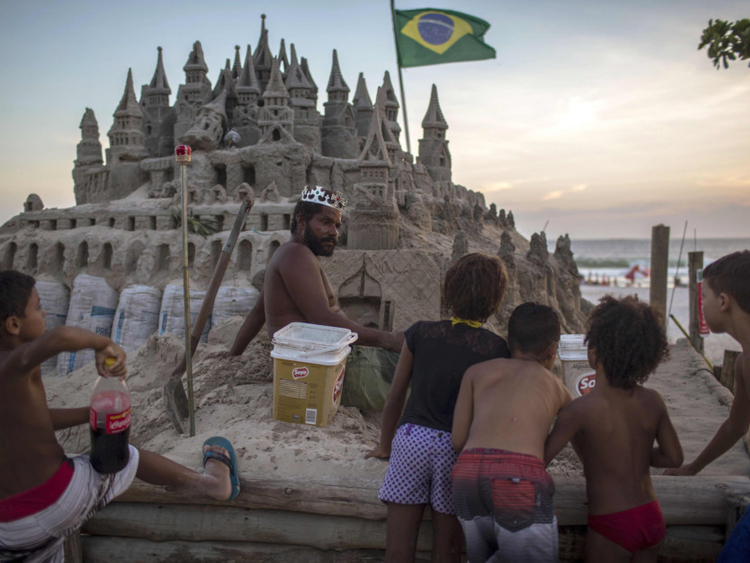
RIO DE JANEIRO: With a crown on his head, Marcio Matolias carefully retouches his sandcastle, sculpting and smoothing with a shovel as bathers cool off nearby in the suffocating January heat.
They say a man’s home is his castle and Marcio has lived in his - albeit made of sand - on a beach in Rio de Janeiro for the last 22 years.
In Barra da Tijuca, a wealthy beachside neighborhood west of Rio, neighbors and friends call him “The King.”
He gladly assumes the role and poses willingly for passers-by, scepter in hand, on his throne outside his meticulously-sculpted home.
It seems a precarious existence but Marcio, 44, can never see himself living another way.
“People pay exorbitant rents to live in front of the sea. I don’t have any bills and I live very well here,” he told AFP, waving a hand at the white sand and the islands sparkling on the horizon.
It requires constant upkeep.
He retouches a turret here, adjusts a majestic gate there. He sprinkles water on the walls to keep them firm in the baking heat, which on a recent afternoon reached 40 C (104 F).
Despite the idyllic setting, inside space is tight - about three square meters (32 square feet). Marcio, single and with no children, lives with a pile of books and some golf clubs, his passions after fishing.
His bed? A sleeping bag on the ground. His bathroom? The firemen’s station about 30 meters away, where he can use the bathroom and shower for less than a dollar.
Marcio believes he has everything he needs. The only problem is the unbearable summer heat.
“The sand retains the heat, so sometimes I cannot sleep here and I go to sleep in a friend’s house. But the truth is I prefer to stay here, even if I have to sleep outside by the sea.”
Tourist attraction
Marcio came south to Rio from his humble hometown of Duque de Caxias to seek his fortune, but could only afford to live on the street.
All that changed when one day a friend taught him how to build a sandcastle.
“I learned a lot from reading and I think my castle is a mixture of styles, between Niemeyer and Gaudi,” he said of his royal palace, buttressed with sandbags and logs.
The mayor’s office never gave him a problem, he said.
“I became a tourist attraction in some way, and also a social service,” he said, gesturing to his bookstand on the nearby promenade.
He doesn’t ask for money, only that people exchange what they take.
To make a living, Marcio put a box for donations at the entrance to his sandcastle.
But, throughout a recent afternoon, of the score of people who stopped to take pictures, nobody left a coin.
Marcio doesn’t appear to care.
“They often rob the box. I used to get angry. I wanted to sleep with a stone in my hand to stop it, but I started living with that paranoia, and I don’t want that. I do this for pleasure,” he said.
Work in progress
From time to time, a shopping center pays him to make one of his magnificent sand sculptures for special events.
Marcio would like his works not to be so ephemeral. Rain can destroy in a few minutes the 10 or 20 hours’ work it takes him to carefully complete one of his fairytale castles.
An optimist by nature, Marcio hopes to be able to realize his great dream next year, to make sculptures using other materials, at a friend’s place.
Meanwhile, he doesn’t seem to tire of endlessly carving his fragile palace with a knife or a shovel.
Like his hero Gaudi’s Sagrada Familia cathedral in Barcelona, the largest unfinished basilica in the world, Marcio’s creation is a perpetual work in progress.













